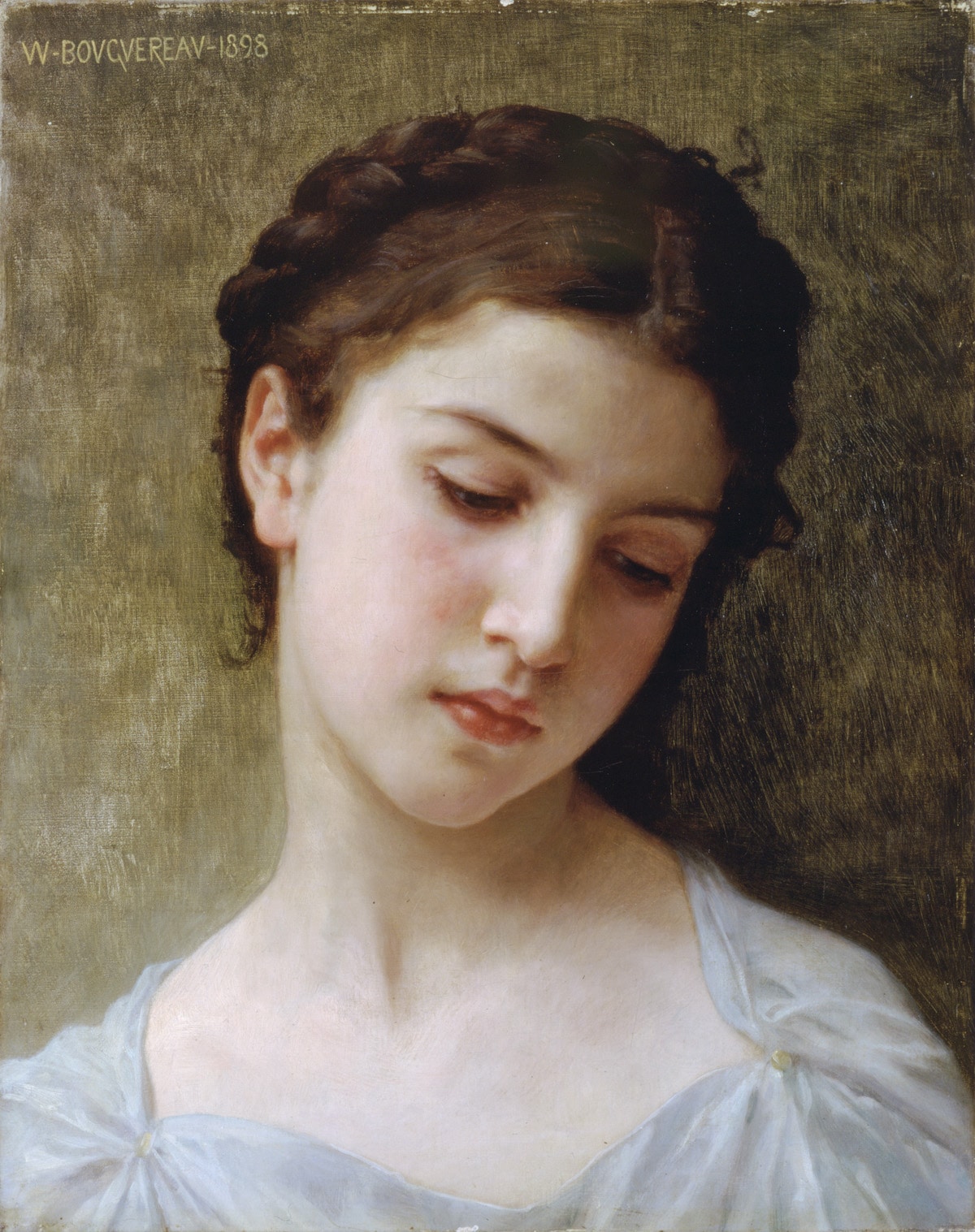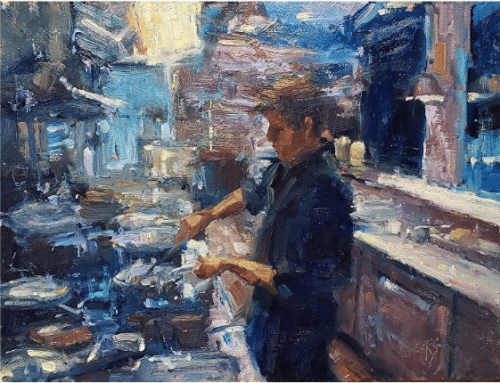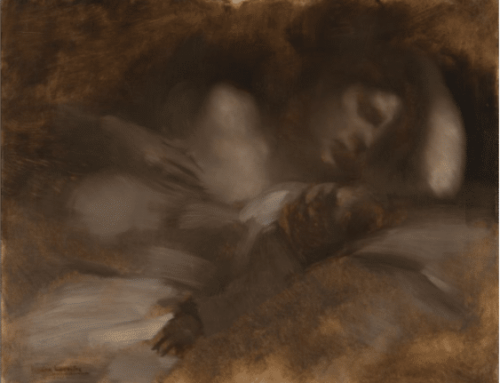The human need to examine itself in the mirror of art begins with early civilization, and portraiture is one of its classic and oldest forms.
As far as we can tell from history, the portrait begins in ancient Egypt, where men and women of many ranks, not just kings but also women, hunters, and even lowly craftsmen, were immortalized in sculpture and tomb painting. The idealized world of the classical Greek and Roman artists who followed provided the artists of the Renaissance with the “classical ideal” that became the benchmark for traditional Western portraiture.
One of the later masters of the classical portrait is surely William-Adolphe Bouguereau (1825-1905).
Debt to Raphael
Bouguereau was the most significant leader of the Royal Academy of Art in France, which along with its equivalent in England, ruled as the most important and powerful professional art society in Europe during the eighteenth and nineteenth centuries.
Bouguereau’s Head of a Young Woman from 1898 (reproduced at the top of this page) shows all the grace, poise, beauty, modesty, and elegant color, shading, and line handling we associate with classical portraiture, the immediate precedents for which were laid down by Renaissance masters such as Leonardo, Botticelli, Michelangelo, and Raphael.
Bouguereau copied Raphael’s The Triumph of Galatea as part of his requirements for receiving the Prix de Rome. It seems Raphael above all others inspired Bouguereau with the ideal of the beautiful that he placed at the heart of his work.
For artists throughout the twentieth century, Bouguereau epitomized the height of traditionalism, and therefore, according to your point of view, all that was right – or all that was wrong – with representational painting.
Bouguereau created an artificial, sentimentalized classicism so wildly popular with wealthy patrons in his time that it largely determined, through the powerful Academy he controlled, what art could and could not be exhibited and seen by the public in France. The Academy’s heavy-handed dominance in fact fired up the rebellious French movements that laid the foundations for modern art: first Barbizon (e.g. Corot), then Impressionism (e.g. Monet) and Post-Impressionism (e.g. Van Gogh), and finally Fauvism and early abstraction (Cezanne, Matisse, Picasso).
These opened the door for the many progressive and self-expressive movements that followed as the old world of the nineteenth century gave way to the new world of the twentieth.
Bouguereau today still gets far less attention than the Impressionists and all that came after. However, now that most of the dust has settled, it’s easier to appreciate just what a master Bouguereau really was in terms of oil technique at the service of visual poetry and nostalgic emotion.
Today, realist painters are looking again to Bouguereau as a the ultimate master of classical technique and teaching his methods to new realists through ateliers, workshops, and in videos on classical portraiture and style.




